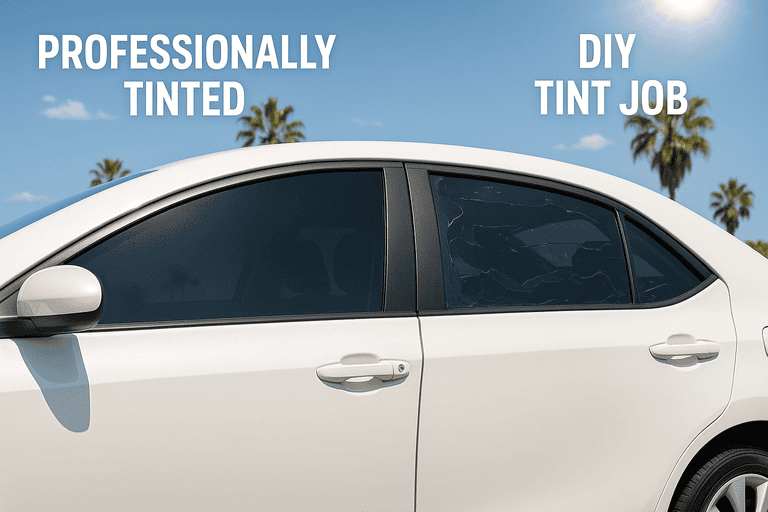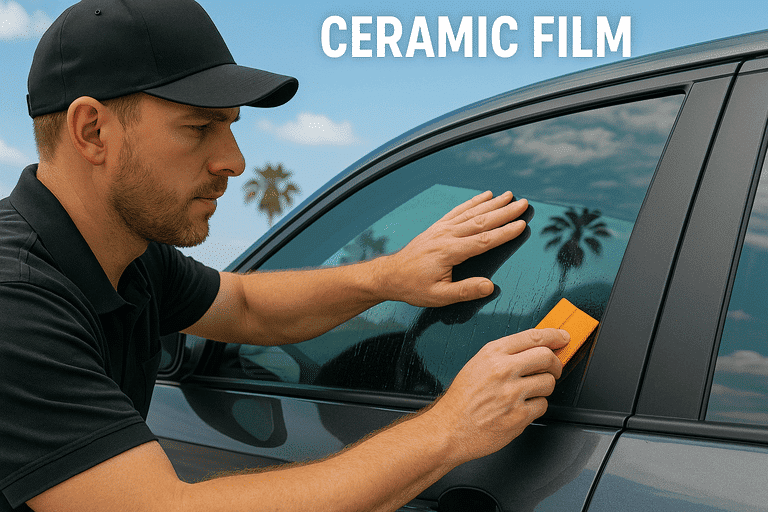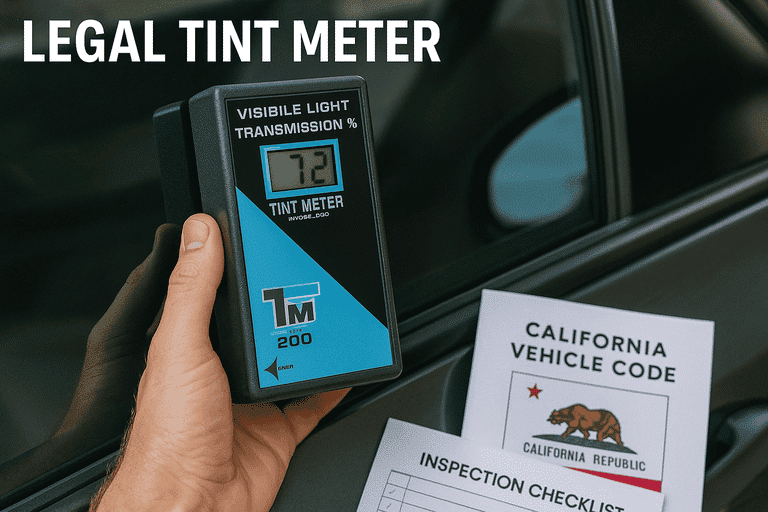Section 1: Why Car Window Tinting Matters in Southern California
In sunny San Diego and across Southern California, car window tinting is more than a style choice—it’s a practical upgrade. The constant UV exposure can fade your interior, increase cabin temperatures, and even affect your skin. A professional tint job can solve these problems, but only if done right. Before you move forward, it’s important to avoid these common missteps that could cost you time, money, or even legal trouble.

Section 2: Mistake #1 – Choosing the Wrong Type of Tint Film
Not all tint films are created equal. The biggest error many drivers make is picking tint based solely on cost or appearance. Cheaper dyed films may look good initially but often bubble, fade, or peel quickly. In contrast, ceramic or carbon films provide long-term durability, better UV protection, and superior heat rejection.
Pro Tip for SoCal Drivers:
Opt for a high-performance film that blocks infrared heat—ideal for coastal and desert climates. Ask for specs like UV rejection percentage and Total Solar Energy Rejected (TSER).
Section 3: Mistake #2 – Ignoring California’s Tint Laws
One of the fastest ways to waste your investment is by installing an illegal tint. California has strict regulations for how dark your tint can be, especially on front side windows and windshields. Violate these laws, and you could face citations, forced removal, or issues during vehicle inspections.
Current Legal Limits in California (As of 2025):
- Front side windows: Must allow more than 70% of light in
- Back side & rear windows: Can be darker
- Windshield: Only the top 4 inches may be tinted
Solution: Always choose a certified installer familiar with state law. They can ensure your tint is both effective and street-legal.

Section 4: Mistake #3 – DIY Tinting Without Proper Tools or Experience
While DIY kits may seem budget-friendly, they rarely deliver professional results. Wrinkles, air bubbles, misaligned cuts, and contamination are common problems. Plus, removing a bad tint job can be a labor-intensive process that damages your windows or defroster lines.
Why It’s Risky in San Diego:
Dust, humidity, and heat all impact the tinting process. Trained technicians know how to prep your vehicle properly and apply film in a controlled environment.
Better Move:
Let a professional do the work—it saves you time, hassle, and often money in the long run.
Section 5: Mistake #4 – Not Considering Your Lifestyle or Car Use
A luxury vehicle used for business meetings might need a lighter, more elegant tint, while a rideshare driver might want a darker rear window tint for passenger privacy. Your vehicle type, typical driving conditions, and parking situation should influence the tint you choose.
Considerations for SoCal Drivers:
- Frequently parked outdoors? Get tint with higher heat rejection.
- Commuting long distances? Prioritize UV protection.
- Want better visibility at night? Avoid films that are too dark.
Customization is Key: Talk to your tint specialist about your habits and driving environment before choosing a film.

Section 6: Mistake #5 – Skipping Post-Installation Care
Even the best tint job can be ruined if not properly cared for. After installation, the film needs time to fully cure—usually a few days to a week depending on the film type and weather conditions. Rolling down your windows too soon or using ammonia-based cleaners can damage the film.
Proper Tint Aftercare Tips:
- Don’t roll down windows for at least 3–5 days.
- Clean with soft cloths and ammonia-free glass cleaner.
- Park in the shade when possible during the curing period.
Neglecting aftercare is one of the most avoidable reasons people end up needing a re-tint.
Conclusion: Tint Smart, Drive Cool
Getting your car windows tinted in San Diego or anywhere in Southern California can dramatically improve comfort, safety, and style. But only if done right. By avoiding these five common mistakes, you’ll ensure your tint looks great, performs well, and complies with California law.
Looking for expert car window tinting in San Diego? Partner with a local professional who understands the climate, legal standards, and film technology that works best for your ride.

